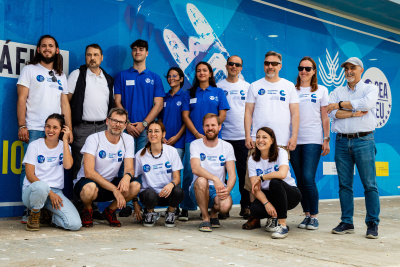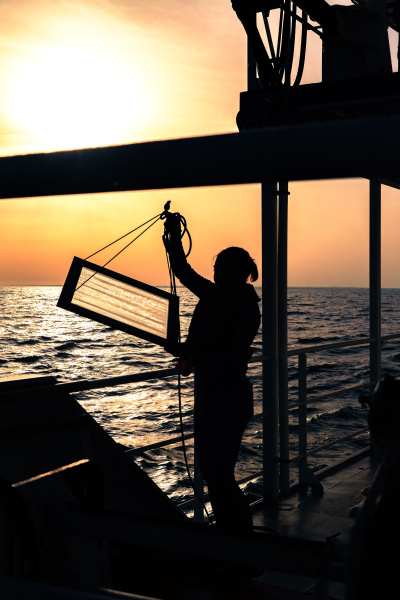'It was definitely a team effort. It would not have been possible without the contribution and commitment of many people,' says dr Aleksandra Brodecka-Goluch, scientific leader of the expedition, about the collaboration on the SEA-EU research cruise to Cádiz. We invite you to read a conversation with a scientist from the Department of Chemical Oceanography and Marine Geology about the longest voyage of the UG r/v Oceanograf.
Marcel Jakubowski: - When you think of the 2022 SEA-EU cruise, what is the first thing that comes to mind?
Dr Aleksandra Brodecka-Goluch: - Whenever I recall the SEA-EU cruise to Cádiz, the first thing that comes to mind is ‘a pioneering venture’. It was the first voyage of the r/v Oceanograf outside the Baltic Sea, the first voyage in Atlantic waters, through the Bay of Biscay, and the first time such a multidisciplinary scientific team from several European universities worked together on board the Oceanograf. Considering how many things needed to be taken care of at the time, I am all the more pleased that it all worked out very well: we tested ourselves 'in scientific combat' at sea, took hundreds of samples, and made great contacts. It is really something to remember :)

- How was UG scientists’ collaboration with scientists from SEA-EU partner universities?
- We met online many times after the cruise, as part of our project teams, mainly to discuss further work and the publication of results. I would like to remind you that during the cruise we collected samples and data within the framework of three projects: concerning greenhouse gas emissions from the bottom of the Baltic Sea, air quality in European coastal areas, and large-scale comparative studies of microplastics in European coastal waters. The scientific contacts established will certainly pay off. We already have ideas for further scientific projects, this time geared more towards the Baltic, obviously using the r/v Oceanograf as the main research tool. Now it would just be necessary to get the timing right.
- What did the cruise mean to you - as a stage in your scientific career, but also simply as an event in your life?
- As I mentioned earlier, SEA-EU's first cruise to Cádiz aboard the Oceanograf was a unique event in many ways. It was the first time I had the opportunity to be the scientific director of such a long voyage (both in terms of duration - almost 40 days - and nautical miles covered - more than 4,000 NM), involving people from the six maritime universities affiliated to the SEA-EU alliance, and such an interdisciplinary one, during which geophysical, chemical, and biological research had to be supervised on an ongoing basis. It was certainly a team effort. It would not have been possible without the contribution and commitment of many people, whom I would like to thank once again. Thank you to all those who contributed to the charismatic atmosphere throughout the expedition! It is something to remember.

- What was the biggest challenge during the research cruise to Cádiz?
- It was definitely putting everything together, making everything work: all the scientific, technical, personal, and representational issues. The cruise itself was preceded by over four months of intense preparations. However, any difficulties that arose at some stages of the voyage were compensated for by the great atmosphere among the scientific team on board, and this really does not happen very often. Thanks to our approach and hard work, we managed to get a lot done - we achieved practically 80-90% of the original plan.
- At what stage is the testing of the samples collected during the cruise?
- Collected samples can be counted by the hundreds, and we also have plenty of geophysical and hydrographic data. Water samples, sediments, sediment cores, biological material - all of this has been under analysis at four research centres by scientific teams from SEA-EU partner universities. Most samples have already been analysed - some immediately during the cruise or a few months later, and others in the following two years. Two publications are practically ready for submission to high-scoring international scientific journals. Another two will probably be written in the near future. The amount of research material we accumulated is really significant.
